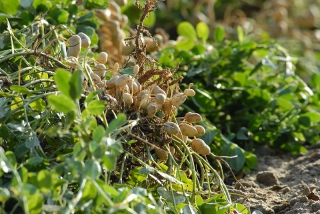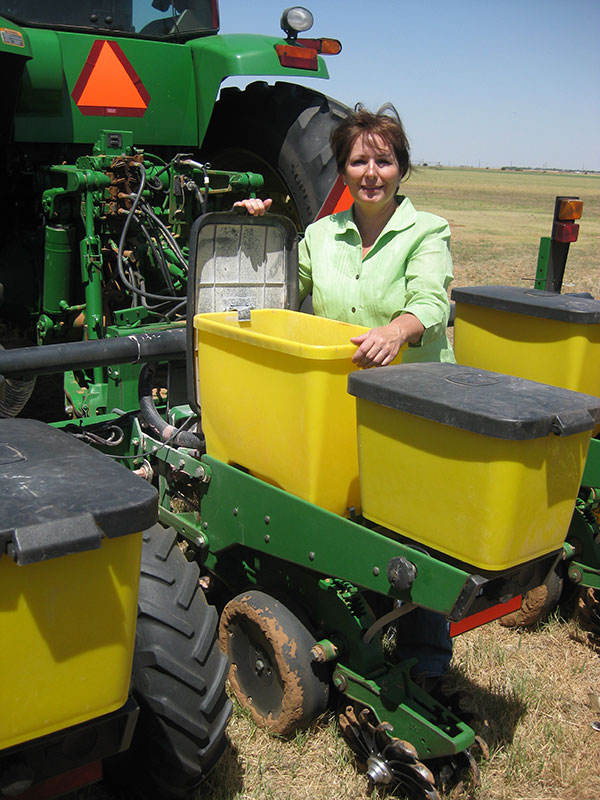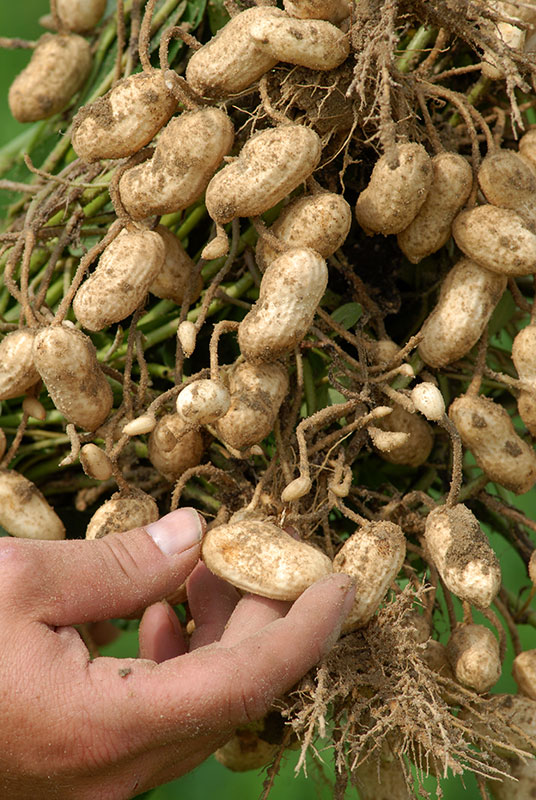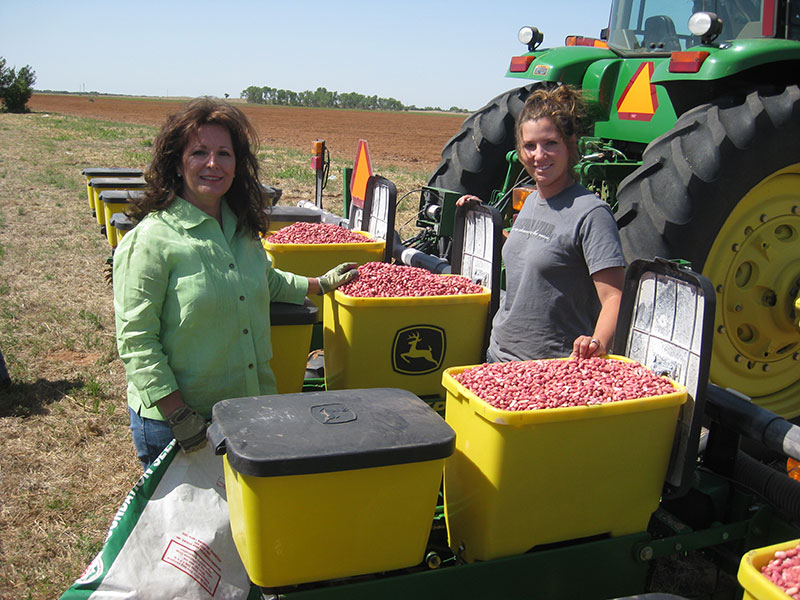
Peanuts: Dry Heat and Rich Legumes
29 November 2018A grower’s experience farming Virginia peanuts in Oklahoma.
By Thomas Smith
 For the White family, the rolling hills and winding Red River of Frederick, Okla., represents both their livelihood and their family history. The family started growing peanuts on their farm about 30 years ago, although they have been farming their 8,400 acres since before Oklahoma’s statehood in 1907. Gayle White said introducing peanuts to their crop rotation was a decision her family has never regretted.
For the White family, the rolling hills and winding Red River of Frederick, Okla., represents both their livelihood and their family history. The family started growing peanuts on their farm about 30 years ago, although they have been farming their 8,400 acres since before Oklahoma’s statehood in 1907. Gayle White said introducing peanuts to their crop rotation was a decision her family has never regretted.
“It’s not a job, it is a way of life,” the grower said, “and it affects every part of our lives. We don’t have a nine-to-five job we have a 24/7 job. But, we love it.”
Despite what the plant’s name suggests, peanuts are a legume and enrich the nitrogen content of the soil they grow in. Because of this, peanuts are a popular crop for farmers to add into a crop rotation. She said the family grows peanuts in the same spot once every three years, which keeps all their crops as well-nourished as possible.
The White family also grows cotton, wheat, milo, sesame, and has two herds of cattle. Although peanuts only account for about three percent of the family’s produce by acreage, they produce around one million pounds of peanuts each year. The farmer said peanuts are her favorite crop to grow.
Oklahoma has very dry conditions, which makes irrigation necessary for some crops. “With peanuts, we can only grow them under irrigation and that’s what limits the number of acres of peanuts that we can grow,” White said. “It’s really such an incredible crop that if we had more irrigation, our peanut acres would be higher than what they are (now).”
Harvesting peanuts is a labor-intensive process and typically takes place around the first week of October. She said a peanut plant is first inverted, then left on top of the ground to dry for four to five days. After a plant is both dug out and dried, a combine will separate the peanut from the vine. The legumes are then loaded into a semitrailer and taken to Vernon, Texas, to be sold.
“A hard freeze while you have peanuts on top of the ground is your worst-case scenario, but normally here we don’t get a freeze like that until November,” White said. “That’s why October is really our target date to try and get through peanut harvest.”
 She said her farm grows Virginia peanuts, although most of Oklahoma grows the Runner variety. Virginia peanuts have the largest kernel and are usually consumed in the shell or sold as gourmet peanut snacks, according to the National Peanut Board. They are also popular for all natural peanut butter and account for 15 percent of all peanut production. Other varieties include Runner, Spanish and Valencia. White thinks Virginia peanuts are the tastiest.
She said her farm grows Virginia peanuts, although most of Oklahoma grows the Runner variety. Virginia peanuts have the largest kernel and are usually consumed in the shell or sold as gourmet peanut snacks, according to the National Peanut Board. They are also popular for all natural peanut butter and account for 15 percent of all peanut production. Other varieties include Runner, Spanish and Valencia. White thinks Virginia peanuts are the tastiest.
“I think you could incorporate a Virginia peanut in any dish and it would improve it,” the grower said.
White often uses peanuts in cakes, peanut butter sandwiches and Asian dishes. She said that her favorite way to eat the crunchy legume is flash fried with a smattering of salt.

Gayle White’s three children all live in Frederick and have their own careers. Her son, a fifth-generation family farmer, now grows peanuts alongside her husband. White said she also has a mother-in-law and three granddaughters in Frederick.
“It’s just amazing that we have an opportunity to continue to farm on land that was homesteaded in 1907 and farmed prior to that,” the grower said. “You know, I sit in my backyard or sit at the farms and just think of how many other generations throughout history were involved in farming and feel so fortunate that we’ve been able to continue in an industry that we love (on the land we love).”
